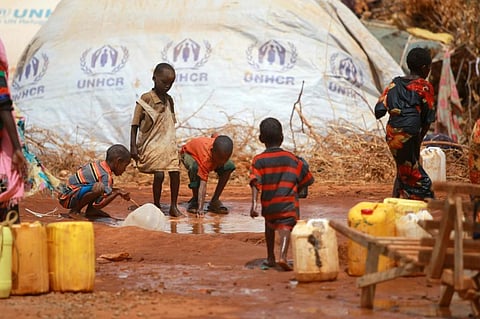

A fifth consecutive failed rainy season is expected to deepen the drought crisis faced by millions of people in the Greater Horn of Africa (GHA), according to a new report released by World Meteorological Organization (WMO) August 25,2022.
The weather forecaster’s projections for October to December, issued at the GHA Seasonal Climate Outlook Forum, show high chances of drier than average conditions across most parts of the region.
Climate outlook forums across the world are supported by WMO in order to provide reliable climate information for society.
The cumulative rainfall in the drought-affected regions of Ethiopia, Kenya and Somalia is predicted to be severely below the average.
“It pains me to be the bearer of bad news when millions of people in the region have already suffered the longest drought in 40 years,” said Guleid Artan, director of the WMO’s regional climate centre for east Africa.
Our models show with a high degree of confidence that we are entering the fifth consecutive failed rainy season in GHA. In Ethiopia, Kenya, and Somalia, we are on the brink of an unprecedented humanitarian catastrophe, he added.
The number of children across the Horn of Africa in eastern Africa facing the impact of drought has increased to at least 10 million from 7.25 million during February-April 2022, according to the United Nations International Children’s Emergency Fund.
Humanitarian organisations and the Inter-Governmental Authority on Development (IGAD) issued a warning last month on the number of people who will experience severe food insecurity in the GHA by 2022. Over 50 million people fit this description.
“I solemnly renew our call to national governments, donors, humanitarian and development actors to adopt a no-regret strategy and help us overcome this crisis,” said Workneh Gebeyehu, executive secretary of the IGAD.
Nearly half of Somalia’s population faces a severe food crisis which might lead to thousands of deaths due to starvation.
“Somalia is in danger of entering an unprecedented fifth consecutive failed rainy season,” said Adam Abdelmoula, deputy special representative of the secretary-general of the United Nations, resident and humanitarian coordinator.
Famine claimed the lives of 260,000 Somalis in 2010-2011. This cannot be allowed to happen again in 2022, he added.
Chris Funk, director of Climate Hazards Center (CHC), has attributed the current droughts to the interaction between ‘La Niña’ and climate change.
The CHC is one institution that equips an international team of earth scientists with precise data on climate change, its impacts and famine. CHC focuses on east Africa, the world’s most drought-prone area.
“The current multi-season drought has been produced by a natural multi-year La Niña event, amplified by climate change,” he had said in an interview with Down To Earth.
The impact of La Niñas is increasing in east Africa due to human-induced warming in the oceans, he had added.